Table of Contents
Deep within the soil map of Cu Chi Vietnam played a pivotal role in the resistance against foreign aggression, providing a base for operations, shelter from air raids, and a network of communication routes. Today, the tunnels stand as a testament to the resilience and determination of the Vietnamese people, attracting visitors from around the world who seek to explore this remarkable subterranean world.
Overview of Cu Chi, Vietnam
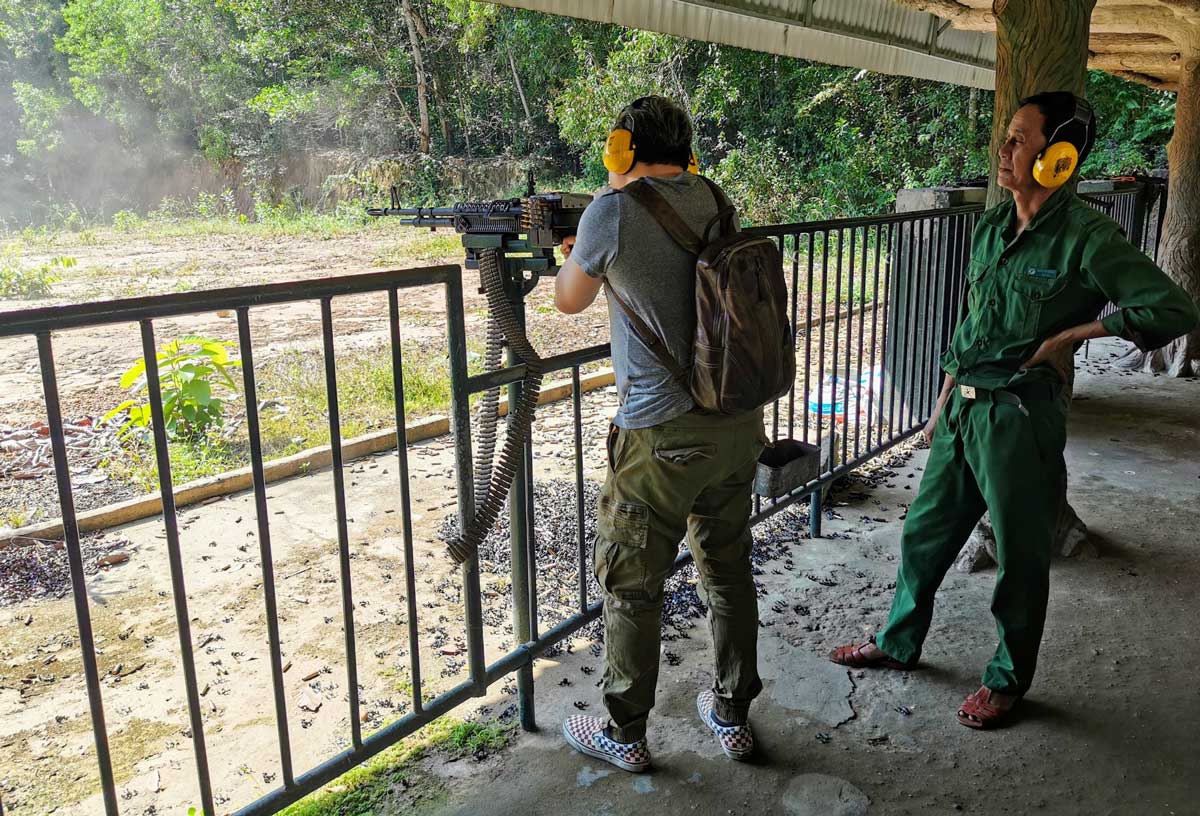
Located about 70 kilometers northwest of Ho Chi Minh City, Cu Chi is a district in the province of Ho Chi Minh City, Vietnam. It is known for its lush greenery, historical significance, and traditional rural lifestyle. The district is home to the famous Cu Chi Tunnels, which have become a popular tourist attraction in recent years. In addition to the tunnels, Cu Chi also offers a variety of outdoor activities, cultural experiences, and delicious local cuisine.
Exploring the History map of Cu Chi Vietnam
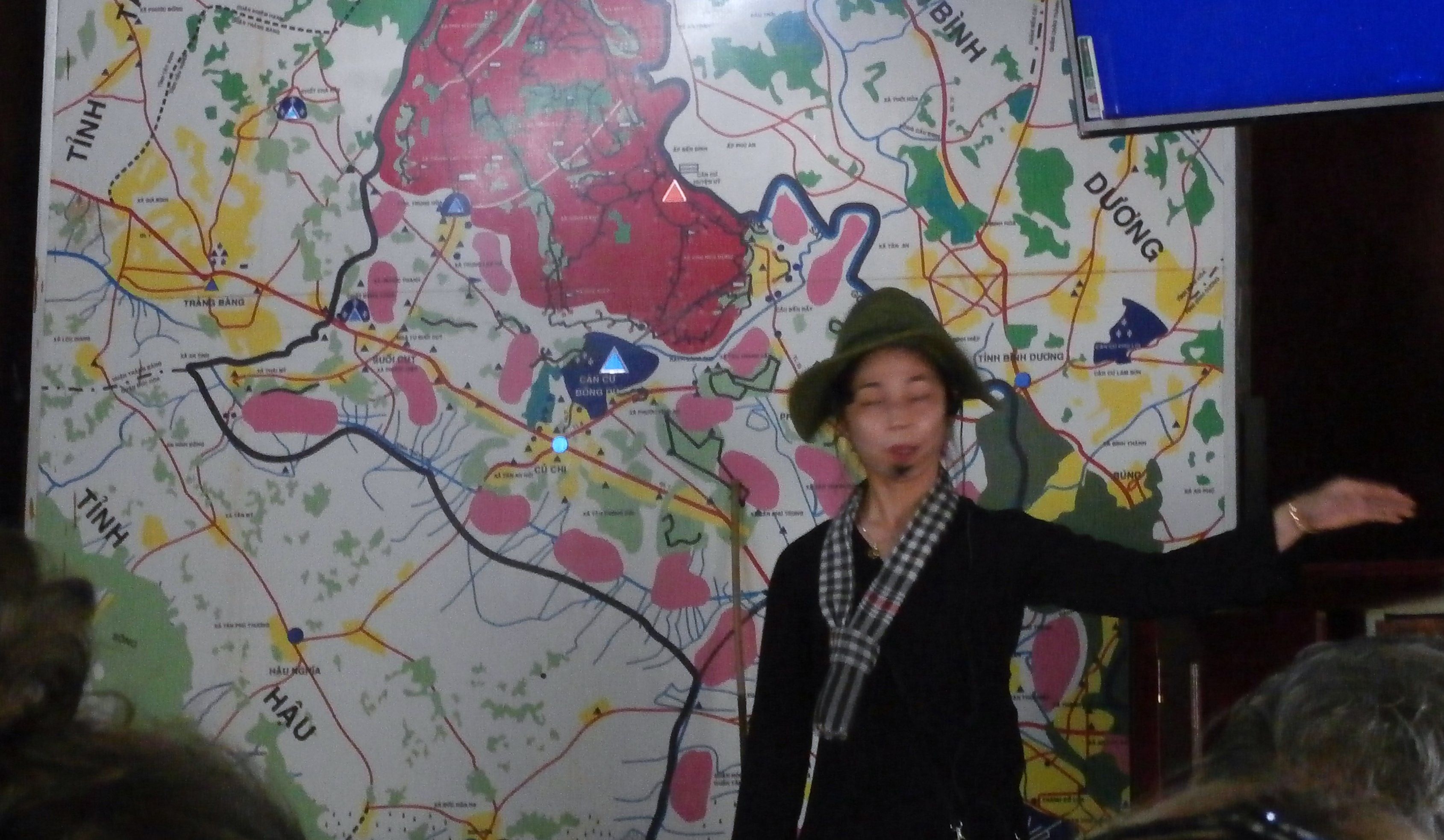
The map of Cu Chi Vietnam were initially constructed during the First Indochina War against French colonialism, but their significance was amplified during the American War in Vietnam. As the United States deployed its military might, the Viet Cong realized the importance of guerrilla warfare and underground fortifications. The tunnels became an intricate network that spanned more than 250 kilometers, connecting villages, hospitals, command centers, and weapon caches.
The construction of the tunnels required immense dedication and ingenuity. Villagers and soldiers worked tirelessly, often under the cover of darkness, to excavate the earth, creating a vast maze of chambers, shafts, and passageways. The tunnels were not only used for hiding and transporting supplies, but also for living quarters and hospitals. They were equipped with ventilation systems, booby traps, and even kitchens to sustain the Viet Cong soldiers.
The Importance of the map of Cu Chi Vietnam in the Vietnam War
The map of Cu Chi Vietnam played a crucial role in the resistance against foreign aggression during the Vietnam War. They provided a safe haven for the Viet Cong, allowing them to launch surprise attacks on American troops and then quickly disappear into the tunnels. The tunnels also served as a base for operations, where weapons and supplies were stored and distributed.
Moreover, the tunnels were an effective means of communication for the Viet Cong. They had a complex system of coded signals and secret entrances, making it difficult for the enemy to locate and destroy them. The tunnels also allowed for the transportation of troops and supplies without being detected by the American forces.
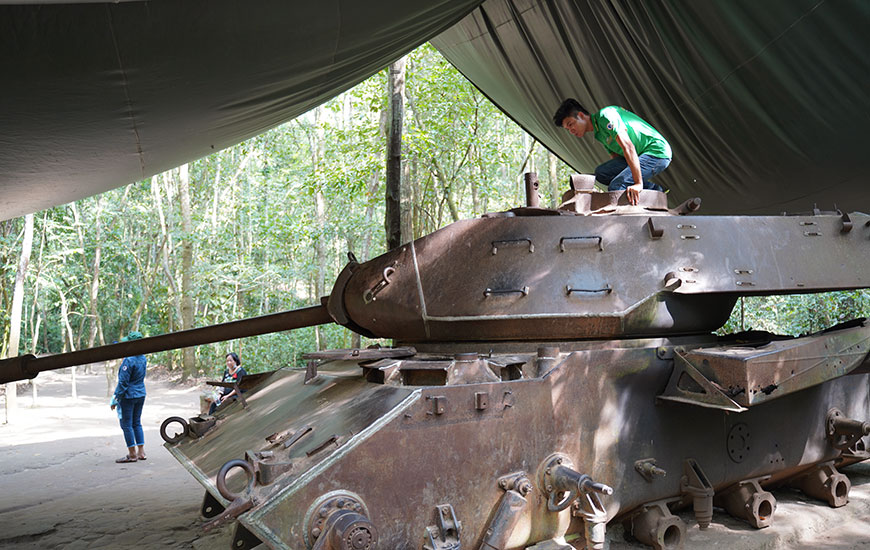
Visitors to map of Cu Chi Vietnam can now explore a small section of the original tunnel system, which has been preserved and opened to the public. The tunnels have been widened and reinforced to accommodate tourists, but they still provide a glimpse into the harsh conditions that the Viet Cong soldiers endured during the war.
Tour Options and Tips
There are several tour options available for visitors to explore the map of Cu Chi Vietnam. These include group tours, private tours, and even adventure tours that allow you to crawl through the narrow passageways of the tunnels. It is recommended to book a tour in advance, as they tend to fill up quickly.
It is also important to wear comfortable clothing and closed-toe shoes when visiting the tunnels. The tunnels can be hot and humid, so bring plenty of water and sunscreen. It is also advisable to bring insect repellent, as there may be mosquitoes and other bugs in the area.
Map of Cu Chi Tunnels
To help you navigate the tunnels, here is a map of the Cu Chi Tunnels with some of the key points of interest marked:
| Point of Interest | Description |
|---|---|
| Entrance | This is where the tour begins. You will be given a brief introduction to the tunnels and their history before entering. |
| Meeting Room | This was used as a gathering place for the Viet Cong soldiers. It also served as a place to hold meetings and discussions. |
| Kitchen | The kitchen was used to prepare meals for the soldiers. It was equipped with simple cooking tools and utensils. |
| Hospital | The hospital was used to treat wounded soldiers. It was equipped with basic medical supplies and equipment. |
| Command Center | This was the main headquarters for the Viet Cong in Cu Chi. It was used for planning and coordinating military operations. |
| Weapon Storage | This area was used to store weapons and ammunition. It was well-hidden and protected by booby traps. |
| Escape Tunnel | This was a secret exit that led to a nearby river. It was used as an escape route in case the main entrance was discovered by the enemy. |
Discovering Hidden Gems in Cu Chi
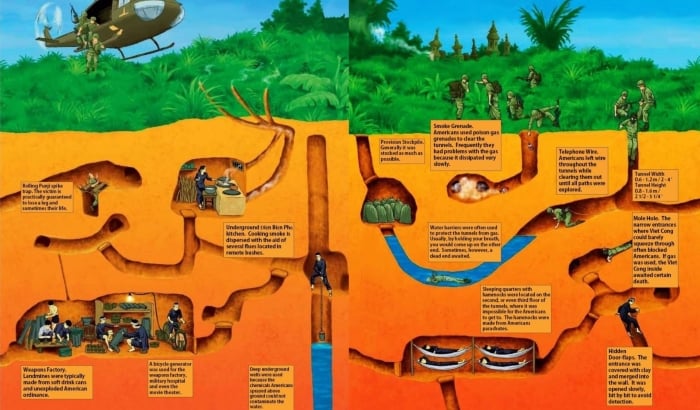
Aside from the famous Cu Chi Tunnels, there are many other hidden gems waiting to be discovered in Cu Chi. Here are some of the must-visit places in the district:
Ben Duoc Memorial Temple
Located near the Cu Chi Tunnels, the Ben Duoc Memorial Temple is a tribute to the soldiers who fought and died in the Vietnam War. The temple features a large statue of a mother holding her child, symbolizing the sacrifices made by Vietnamese mothers during the war. Visitors can also see a collection of tanks, helicopters, and other war relics on display.
Cao Dai Temple
The Cao Dai Temple is a colorful and ornate religious complex that serves as the center of the Cao Dai religion in Vietnam. The religion is a fusion of Buddhism, Taoism, Confucianism, and Christianity, and the temple reflects this diversity in its architecture and decorations. Visitors can attend a prayer ceremony and learn more about this unique religion.
Cu Chi Wildlife Rescue Station
For animal lovers, the Cu Chi Wildlife Rescue Station is a must-visit destination. The station is home to a variety of rescued animals, including bears, monkeys, and birds. Visitors can take a tour of the facility and learn about the conservation efforts being made to protect these animals.
Must-See Sights in Cu Chi, Vietnam
In addition to the map of Cu Chi Vietnam and other hidden gems, there are several other must-see sights in Cu Chi that showcase the district’s rich history and culture:
Hoang Cam Stilt House
The Hoang Cam Stilt House is a traditional Vietnamese house that belonged to a local leader during the French colonial period. The house has been preserved and turned into a museum, showcasing the daily life of a wealthy family during that time. Visitors can see the intricate architecture and furnishings of the house, as well as artifacts from the past.
Phu My Hung Temple
Located in the heart map of Cu Chi Vietnam, the Phu My Hung Temple is a beautiful and peaceful place to visit. The temple is dedicated to the goddess Thien Hau, who is believed to protect fishermen and sailors. Visitors can admire the intricate carvings and statues inside the temple, as well as the serene surroundings.
Cu Chi Tunnels Shooting Range
For those looking for a unique experience, the map of Cu Chi Vietnam Shooting Range offers the opportunity to fire a variety of weapons used during the Vietnam War. Visitors can choose from a range of guns, including AK-47s and M16s, and shoot at targets set up in a simulated battlefield. Safety precautions are taken, and visitors are accompanied by trained professionals.
Cu Chi’s War Remnants and Memorials
As a district that played a significant role in the Vietnam War, Cu Chi is home to several war remnants and memorials that serve as reminders of the past:
Cu Chi War Remnants Museum
The Cu Chi War Remnants Museum is a small but informative museum that displays artifacts, photographs, and documents from the Vietnam War. Visitors can learn about the history of the war, the impact it had on the Vietnamese people, and the efforts made towards peace and reconciliation.
Long Tan Cross Memorial
Located near the Cu Chi Tunnels, the Long Tan Cross Memorial commemorates the Battle of Long Tan, which took place during the Vietnam War. The memorial features a large cross and a plaque with the names of the Australian soldiers who lost their lives in the battle.
Hoi Anh Temple
The Hoi Anh Temple is a memorial temple dedicated to the soldiers who fought and died in the Cu Chi area during the Vietnam War. The temple features a large statue of a soldier and a wall of remembrance where visitors can pay their respects.
Experiencing Local Culture in Cu Chi

One of the best ways to experience the local culture in Cu Chi is by visiting the district’s markets and villages. Here are some places you should not miss:
Cu Chi Market
The Cu Chi Market is a bustling local market where you can find a variety of fresh produce, street food, and souvenirs. It is a great place to immerse yourself in the daily life of the locals and try some delicious Vietnamese dishes.
Phuoc Vinh An Village
Phuoc Vinh An Village is a traditional village known for its rice paper production. Visitors can take a tour of the village and see how rice paper is made, as well as try their hand at making some themselves. The village also offers homestay options for those looking to experience rural life in Vietnam.
Cu Chi Rubber Plantation
The Cu Chi Rubber Plantation is a vast area of rubber trees that has been in operation since the French colonial period. Visitors can take a tour of the plantation and learn about the process of tapping rubber from the trees. The plantation also offers a peaceful and scenic setting for a leisurely walk or bike ride.
Outdoor Adventures in Cu Chi, Vietnam
For adventure seekers, Cu Chi offers a variety of outdoor activities that allow you to explore the district’s natural beauty:
Kayaking on the Saigon River
The Saigon River runs through Cu Chi, offering a picturesque setting for kayaking. Visitors can rent kayaks and paddle along the river, taking in the lush greenery and spotting local wildlife.
Trekking in Cu Chi National Park
Cu Chi National Park is a protected area that covers over 28,000 hectares of land. It is home to a diverse range of flora and fauna, including rare species such as the black-shanked douc langur. Visitors can take a guided trek through the park and learn about the different plants and animals that call it home.
Cycling in Cu Chi Countryside
Cycling is a popular activity in Cu Chi, as it allows visitors to explore the district at their own pace. There are several cycling routes available, ranging from easy to challenging, that take you through the countryside, past rice fields, and to local villages.
Best Places to Eat in Cu Chi
No trip to Cu Chi is complete without trying some of the delicious local cuisine. Here are some must-visit places to eat in the district:
Pho Cu Chi
Pho Cu Chi is a small restaurant that specializes in pho, a traditional Vietnamese noodle soup. The broth is made from scratch, and the noodles are hand-pulled, resulting in a flavorful and authentic dish.
Banh Xeo Cu Chi
Banh Xeo is a popular Vietnamese dish that consists of a crispy pancake filled with pork, shrimp, and bean sprouts. Banh Xeo Cu Chi serves up some of the best banh xeo in the district, along with other tasty dishes.
Com Tam Ba Gia
Com Tam is a dish made from broken rice and served with various toppings, such as grilled pork, fried egg, and pickled vegetables. Com Tam Ba Gia is a local favorite, known for its delicious com tam and friendly service.
Tips for Visiting Cu Chi, Vietnam
- The best time to visit Cu Chi is during the dry season, from December to April.
- It is recommended to book a tour in advance, as they tend to fill up quickly.
- Wear comfortable clothing and closed-toe shoes when visiting the tunnels.
- Bring plenty of water and sunscreen, as well as insect repellent.
- Be respectful when visiting war remnants and memorials.
- Try to learn a few basic Vietnamese phrases before your trip, as it will be appreciated by the locals.
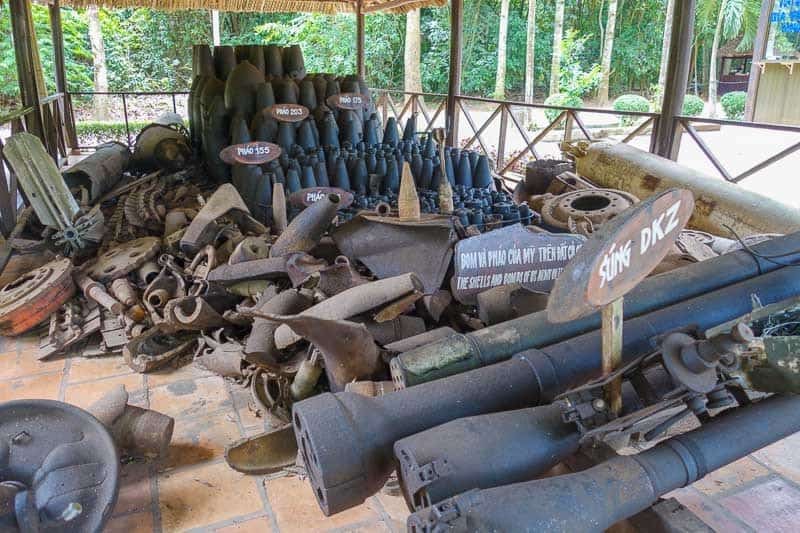
Conclusion
The Cu Chi Tunnels are not only a significant historical site but also a symbol of the resilience and determination of the Vietnamese people. Exploring this hidden underground network is an unforgettable experience that allows visitors to learn about the country’s past and appreciate its present. With its rich history, natural beauty, and warm hospitality, map of Cu Chi Vietnam is a must-visit destination for anyone traveling to Vietnam.